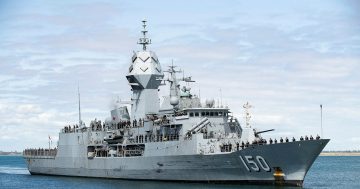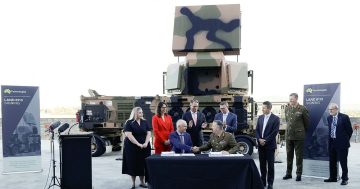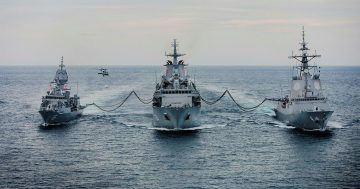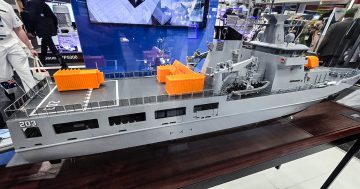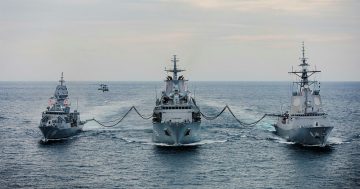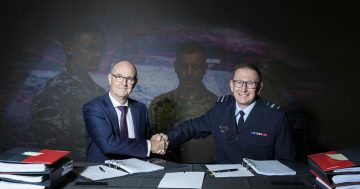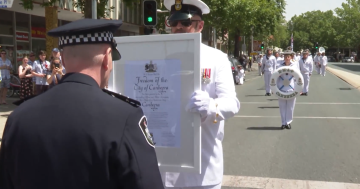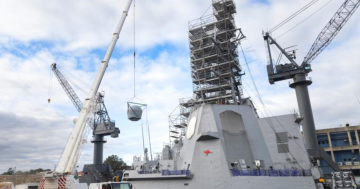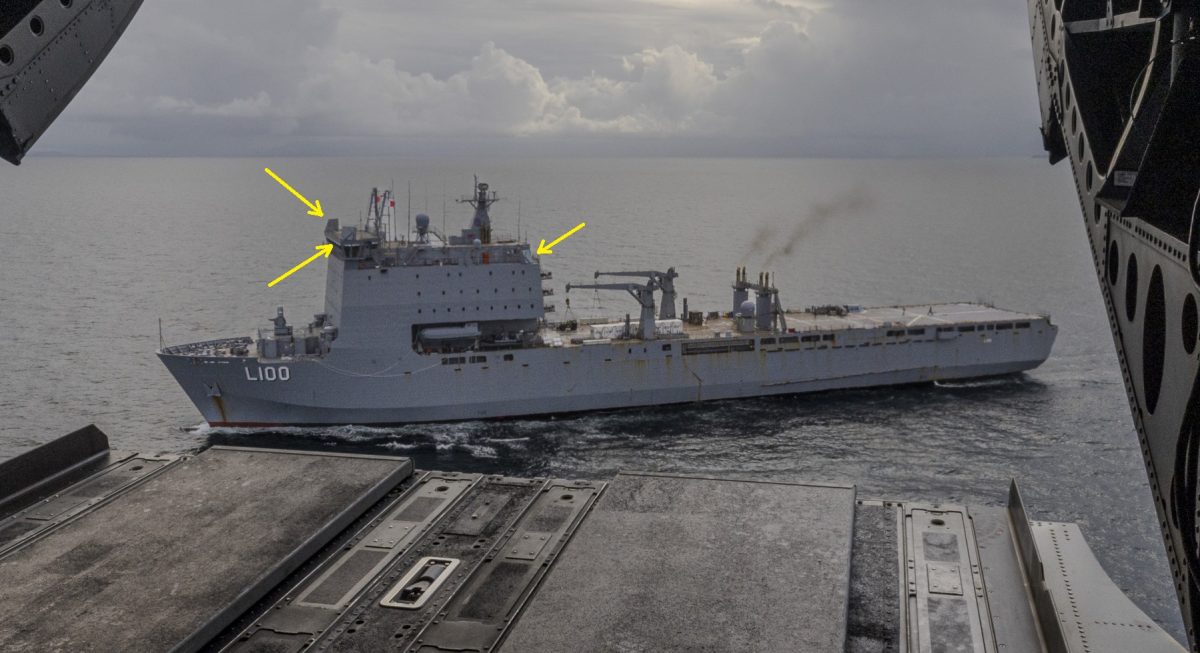
The new CEA CEAFAR arrays on the superstructure of HMAS Choules during Chinook helicopter operating trials in February. Photo: ADF.
The Royal Australian Navy’s landing ship dock (LSD) amphibious support vessel HMAS Choules has been fitted with CEA Technologies’ CEAFAR radar arrays during its summer stand-down and maintenance period.
According to a report by Ben Felton in Australian Defence Magazine (ADM) on 15 March, the vessel returned to its home port in Sydney from a deployment to the Solomon Islands in December and was subsequently observed sporting the CEAFAR’s four new arrays atop its superstructure in late January.
The CEAFAR radar is a phased-array system designed by Canberra-based CEA Technologies, and is also fitted to the navy’s eight Anzac-class frigates.
The CEAFAR system also forms the basis for the land-based CEAFAR HPAR-64SG array being acquired by the Australian Defence Force for Tranche 1 of the Project AIR6500 Phase 1 Joint Air Battle Management Systems. The HPAR-64SG array can detect aircraft and missile threats, and the first radar is scheduled to be delivered in 2024.
CEAFAR, a highly capable radar with multiple nodes and no moving parts, can scan multiple areas of the sky or ocean surface simultaneously, and send tracking data of multiple aircraft and vessels to a combat management system (CMS). The four arrays fitted to HMAS Choules are positioned to appear capable of providing 360 degrees of coverage around the vessel.
While HMAS Choules is not believed to be equipped with its own organic CMS, nor have a weapons system, it may be capable of sharing the CEAFAR’s data with other vessels equipped with Aegis or Saab 9LV CMS, such as the Anzac-class frigates, Hobart-class destroyers, Canberra-class LHDs, and even other auxiliary vessels such as the navy’s Supply-class auxiliary oiler replenishment vessels.
ADM reports that before the CEAFAR fitment, HMAS Choules was only equipped with commercial navigation radars, not military air or surface search radars. It said the CEA arrays were fitted as part of the vessel’s wider $100 million Project SEA 3030 Phase 2 Capability Assurance Program (CAP), a fact Defence has confirmed.
In a brief statement, a Defence spokesperson said, “the CEA family of radars offers a significant level of joint force integration, including potential future opportunities with combat management systems and point defence weapon systems (such as integrated air and missile defence), as well as providing aviation support for HMAS Choules.”
The 16,000-tonne vessel entered RAN service in December 2011 after being acquired from the UK. It was initially built for the UK’s Royal Fleet Auxiliary as RFA Largs Bay and entered service in 2006, but was deemed as surplus to requirements after just a few years.
Before entering RAN service, the vessel underwent a major refit that included an overhaul of the propulsion system, a full repaint, an upgrade of the cooling system and saltwater system, an overhaul of the stern ramp, the installation of Mexeflote pontoons, the installation of a temporary aircraft shelter, and Australian-specific safety features.
In 2020, it was announced that HMAS Choules would be replaced by two Australian-built multi-purpose joint supply ships (JSSs) by 2030 under Project SEA 2200, and the 2022 Indo-Pacific Maritime Exposition in Sydney saw lots of activity in this domain as ship manufacturers displayed their JSS concepts.
But just 18 months later, at the 2023 iteration of the Indo-Pacific expo, Defence officials were saying little about the program, and there was no mention of the future of HMAS Choules or the other amphibious surface vessels in or around the government’s Surface Fleet Review released in February.
The comprehensive nature of HMAS Choules’ CAP may mean the vessel’s planned service life will be extended beyond 2030.
Project SEA 3030 Phase 2 includes some 50 discrete activities, including the replacement of the ship’s exhaust system, a complete HVAC reconfiguration, ballast water treatment, auxiliary and mission system upgrades, a major sustainment package for hull and tank preservation, structural and machinery repairs, and planned maintenance across power, propulsion, weapons, comms and auxiliary systems.


